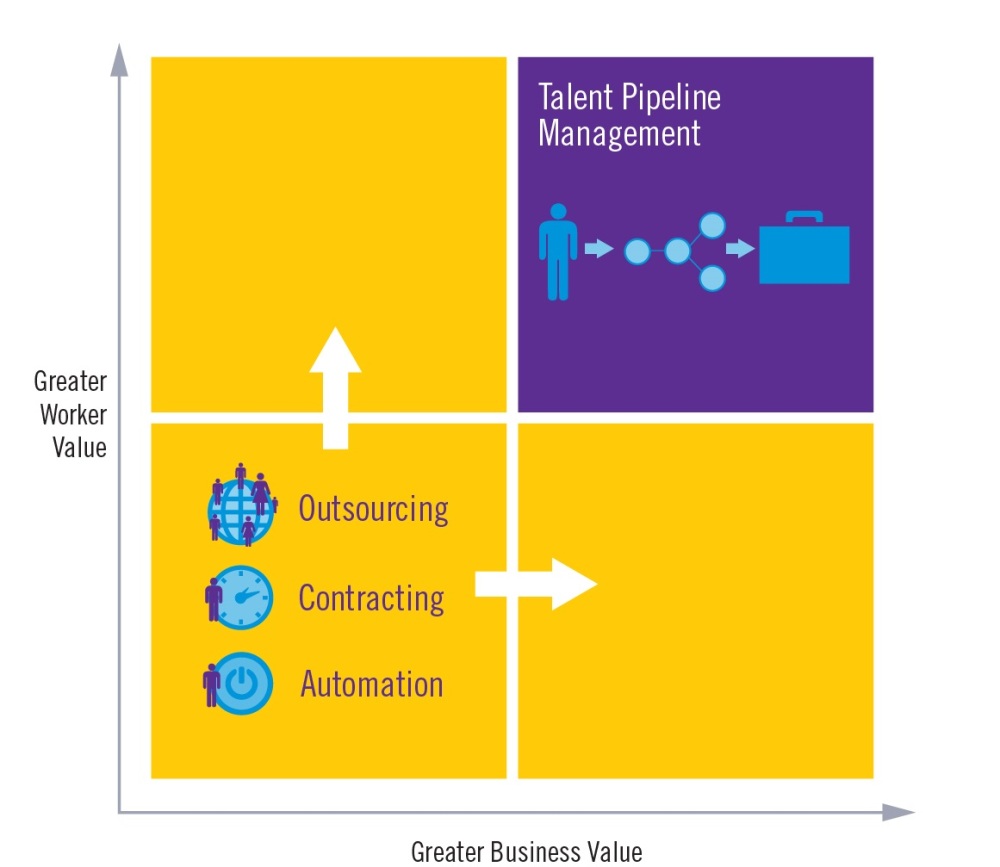 By Emily Kinard, Government Relations Coordinator, USA Funds
By Emily Kinard, Government Relations Coordinator, USA Funds
New Year’s resolutions typically involve a promise to improve and often require a new way of thinking. The Talent Pipeline Management initiative, led by the U.S. Chamber of Commerce Foundation and supported by USA Funds®, promises to improve the match of employer needs and college graduates’ skills through a new way of thinking about the relationship between employers and educators.
Fortunately for employers, the TPM approach to bridging the “skills gap” builds on familiar principles already integral to many businesses: supply chain management best practices.
In my previous blog post, I looked at six strategies employers can use to implement the TPM model, including: organizing employer collaboratives, engaging in demand planning, communicating competency and credential requirements, analyzing talent flows, implementing shared performance measures, and aligning incentives.
Each of these strategies is based on the following supply chain management counterparts:
1. Joint Sourcing
Collaborating with fellow employers to identify and purchase high-quality products and services.
2. Planning
Identifying current and projected demand for products and services.
3. Developing Sourcing Requirements
Defining criteria for purchasing a product or service.
4. Developing Sourcing Networks
Establishing networks of preferred suppliers.
5. Managing and Improving
Overseeing product and service development and distribution to ensure value.
 Just as well-managed supply chains deliver a high-quality product, well-managed talent pipelines deliver a high-quality workforce. Integration of talent strategy with business strategy allows employers to proactively address the skills gap.
Just as well-managed supply chains deliver a high-quality product, well-managed talent pipelines deliver a high-quality workforce. Integration of talent strategy with business strategy allows employers to proactively address the skills gap.
Last month I attended “The Path Forward: Improving Opportunities for African-American Students”, a conference sponsored by the U.S. Chamber of Commerce Foundation and the NAACP. The conference featured employers who actively engage underserved populations. As I listened to panelists’ remarks, I was struck by one notion that was shared: Education is a vehicle to get to the starting line, but it does not guarantee a successful race.
An unsuccessful race is bad for business, it is harmful to the larger economy, and it can be devastating to a student. As USA Funds continues to pursue Completion With a Purpose℠, we are focused not only on supporting students on the way to the starting line, but also on getting them to the finish line and beyond.
TPM positions employers as key customers for educators, but in doing so, it also shapes educational content and delivery in a way that provides the greatest value to students. All of these are worthy goals.
They simply require a new way of thinking.
